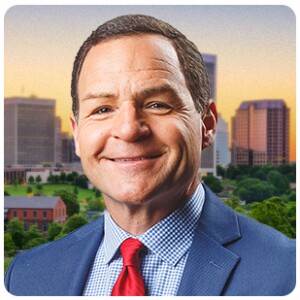EDINBURG, Va. — Just beyond the town boundaries of Edinburg, Virginia, lies the laid-back crossroads of Lantz Mills.
An invisible history flows through this hamlet that has been sitting in silence for centuries in the heart of Shenandoah County.
But Kathleen Brockway is working to change the narrative.
The deaf historian’s mission is personal.
“So I’m here to tell a story about a treasured piece of deaf history,” Brockway said. “There is so much information that is gone or missing that I strive to revitalize.”
Brockway and I communicated with the help of American Sign Language interpreter Weston Broach.
”Upon my family research this kept coming up, this idea of a large deaf group who lived here,” Brockway said.

Lantz Mills roots stretch back to the 1760s when a family with deaf loved ones settled here.
“This area was a deaf village where both hearing and deaf people alike used sign language to communicate,” Brockway said.
During the 18th and 19th centuries, the number of deaf neighbors grew by the dozens.
“Because this was a deaf space. Historically this is where deaf people came and they felt free,” Brockway said. “They used a completely different sign language here.”
The Washington-based historian is uncovering oral histories of the deaf who called Lantz Mills home.
The deaf people’s contributions were ignored by traditional history books.
“These hidden stories are missing from the research and I’m fascinated by that history and filling in that gap. So I need to fulfill those histories and fill those gaps to tell the full story of deaf people,” Brockway said.
Long ago in Virginia, the deaf and people with disabilities were afforded few if any protections. By law, they couldn’t even own land.
”That was not the case here in Lantz Mill. There were several deaf people who owned huge farms including a 94-acre farm. There were properties all around this area. And there were deaf-owned businesses in that direction,” Brockway said.
One of those successful stores is founded by William Christian, a deaf man who owned and operated a funeral and carpentry business.
The foundation and ruins of Christian’s wood shop still exist.
“This was a very busy area. There was lots of traffic. Lots of stores. Several mills,” Brockway said.
Nan Carmack, with the Library of Virginia, is collaborating with Brockway to preserve and promote the story of this little-known landmark.
”It is the everyday story of Virginians that really make our history so rich. Lantz Mills is just one example of that,” Carmack said. “But I cannot think of a more representative story than Lantz Mills of the power of community to overcome whatever needed to be overcome and thrive.”
Carmack said Brockway's contributions to enhancing deaf culture across the Commonwealth can’t be measured.
“I feel like the history until Kat came along was pretty much fading away,” Carmack said.
Katie Mahar lives on Four Leaf Farm, the former 19th-century homestead of the Christian family who owned the carpentry business.
”I had no idea how much history was here,” Mahar said. “I’m a history buff so to know that this was happening right across the creek, that was really neat.”
Mahar admires Brockway for shedding light on the generations of forgotten and marginalized Virginians.
“Even people that live here didn’t know. Not just us. There are people all up and down these roads back here that probably don’t know the history,” Brockway said.
It was common when they died many deaf people were buried in unmarked graves.
But at Lantz Mills’ Union Forge Cemetery, the deaf find dignity even in death.
“This was rare to have identifiable tombstones of real deaf people,” Brockway said.
Digging through archives and climbing the family tree also led Brockway to her roots.
“One hundred percent proud to be here. I am proud of my deaf history and the deaf community,” Brockway said.
The historian discovers the graves of distant deaf relatives.

“It is very inspiring to stand here among all of those who are buried here. And I feel like they are all watching me in spirit,” Brockway said.
By about 1970, with businesses closing and opportunities elsewhere, many deaf families moved away from Lantz Mills.
That signaled the end of the once bustling village where the hearing and deaf people lived in harmony.
“Yes. The deaf were welcomed. They were welcomed here,” Brockway said.
As she pondered and pieced together the past, Kathleen Brockway said she hoped a more comprehensive story of the deaf in Virginia would endure loud and clear.
“We should remember Lantz Mills because it is an important aspect of deaf history which shows we had deaf spaces,” Brockway said. “We had freedom.”
April is National Deaf History Month. If you would like to learn more about Lantz Mills and the deaf culture in Virginia visit the Library of Virginia's Deaf Culture Digital Library.
Watch Greg McQuade's stories on CBS 6 and WTVR.com. If you know someone Greg should profile, email him at greg.mcquade@wtvr.com.
-

Virginia boy who loves John Deere tractors finishes cancer treatment
"We weren't sure we'd even see this day, but he's been a trooper from the very beginning."
Virginia boy who loves John Deere tractors finishes cancer treatmentThe award-winning WTVR CBS 6 journalists are giving a voice to your story. Discover the incredible places and meet the exceptional people who call Central Virginia home.





